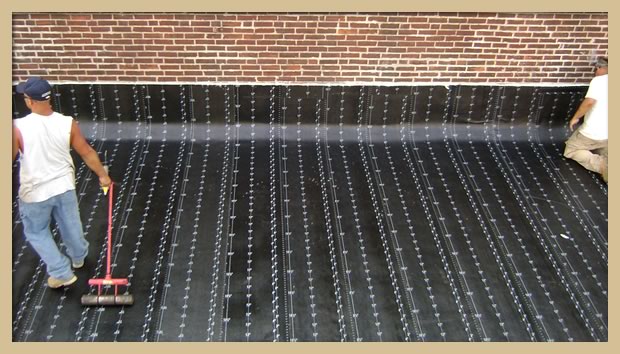Polymer-modified bitumen or modified bitumen sheet membranes were developed in Europe in the early 1960s and have been in use in the U.S. since the mid 1970s. Polymer-modified roof membranes are composed of reinforcing fabrics that serve as carriers for the hot polymer-modified bitumen as it is manufactured into a roll material. Modified roof system membranes are composed of multiple layers. Modified roof systems typically are installed as a two-ply system and almost always are fully adhered.
There are two types of modified roofing membranes:
- SBS polymer-modified bitumen membranes commonly are installed in hot moppings of asphalt or cold adhesive. Some SBS modified membranes are self-adhering; that is, they contain an adhesive backing.
- APP polymer-modified bitumen membranes typically are heat-welded or torch-applied. Consumers should be cautioned that National Roofing Contractors Association (NRCA) does not recommend torch-applying a modified bitumen membrane sheet directly to a wood deck.

Installation of modified roofing to parapet wall.
Benefits of modified roofing
- Polymer modification to asphalts result in greater elongation and the ability to accommodate building movement
- Versatile application options: hot asphalts, cold adhesives, or hot air
- A variety of modified types and millages are available to better provide resistance against foot traffic and common rooftop abuse when needed
